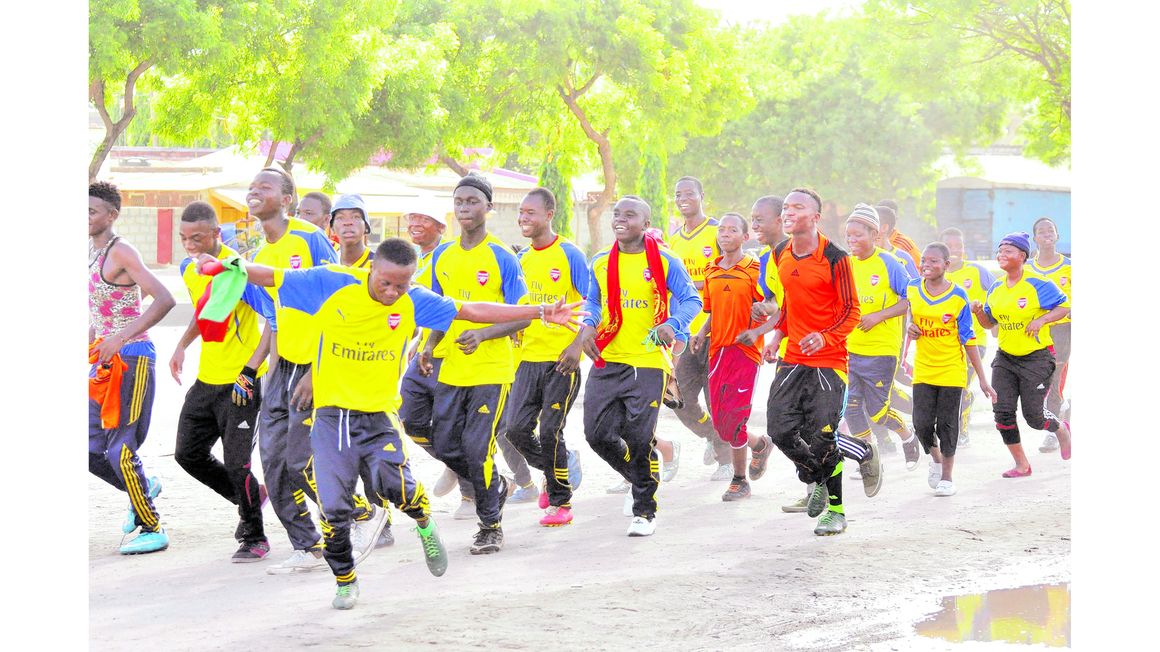
Dar es Salaam residents happily jogging in a street. PHOTO | FILE
By J.M. LUSUGGA KIRONDE
Running in a marathon has become popular in Tanzania. In the recent past, I have participated in the
University of Dar es Salaam Marathon, the Goba Marathon, the Bima Marathon, the MOI Marathon, the Mr UK Marathon - and, come August 15, I pin my hopes on participating in the CRDB Marathon. All these marathons use roads as running tracks.The recent Mr UK Marathon was supposed to be officiated by retired President Jakaya Kikwete. However, he was represented at the event by the Dar es Salaam Regional Commissioner, Mr Amos Makalla.
In his address to the participants, Mr Makalla highlighted the importance of physical exercise. He amazed everyone by pointing out that he had not had malaria for the past thirty years, a fact he attributed to his being very active in physical exercise especially jogging.
One problem with aiming at mass participation in physical exercise is lack of infrastructure. And this is where roads can play a part. Unfortunately, most urban roads in developing countries are designed for motorised transport. Most lack drains for surface water, and pedestrian walkways.
Where walkways are provided, they are narrow, of low standards and are the least-maintained. They may not be visibly marked. Many are dented or badly potholed. In designing and financing roads, pedestrian walkways are the fist to be dropped, should cost cutting rear its ugly head. In some cases, witnessed in Dar es Salaam, the rundown pedestrian walkways along Bagamoyo Road from Tegeta northwards were “nationalised.” That is, they were incorporated in the main trunk road to expand it, as it was becoming too narrow for the ever growing motorised traffic. Pedestrians were considered non-existent - and, in any case, they could use the earthen part of the road reserve. But, tis is inconvenient: dusty, uneven, muddy, and with all sorts of impediments. However, nobody protested against this unfair treatment of the majority of urban residents.
An interesting study carried out by Dr Lukenangula, titled ‘Walkability in Rapidly Growing Cities in Developing Countries: The Case of Dar es Salaam, Tanzania’ - and which was published as a thesis in 2017 - points to the unenviable situation of pedestrian walkways in the city. One of his observation was: “In most areas, there were no lanes for pedestrians, a situation that forced pedestrians to share the road with motorists and cyclists. In some areas, where pedestrian lanes were provided, they were encroached upon by parked cars and street vendors, and some places the walking space was muddy with burst sewers”.
Among their many uses, pedestrian walkways can be very useful for physical exercise including walking, jogging, and (non-motorised) cycling. People on wheel chairs and parents pushing prams would certainly find made pedestrian walkways extremely convenient for them to use. Where these are provided, (like on the roads in the University of Dar es Salaam campus), it is common to see people, using them, sweating it out happily in the morning and evenings. If roads were safer, many more people would come out of their homes or cars and participate in physical exercise. The social impact of this would be reflected in lower medication costs. This should therefore justify the expenses of investing in pedestrian walkways in all our roads; remembering moreover that a significant number of urban trips are made on foot.
Unlike the gym, pedestrian walkways are free, and one could undertake one’s exercises anytime at one’s convenience. Pedestrian walkways need to be made, so that they have an even surface and adequate width to maximise their usefulness.
Challenges would be that well-made pedestrian walkways would be too attractive for the unruly motor-cyclists (‘bodabodas’) and commuter bus drivers (‘daladalas’) in our urban areas. They would also attract the ubiquitous street traders (machingas). The idea, however, should be, to have them in place, in the first instance, and subsequently, mount an education, and regulatory enforcement campaign. Fancy (for example) educating motorists to respect zebra crossings, where these are not provided for!
Exercising along roads has its own downs - like, for example, exposing oneself to inhaling large doses of smoke belched out of the exhaust pipes of our below-standard vehicles. This, however, is outweighed by the benefits of exercising.
The take-home here is that, in order to build inclusive and healthy cities, walking, running and bicycling are important.
The construction of roads should, therefore, accommodate motor vehicles, surface water drainage, as well as pedestrians and cyclists, as a matter of necessity.




No comments :
Post a Comment